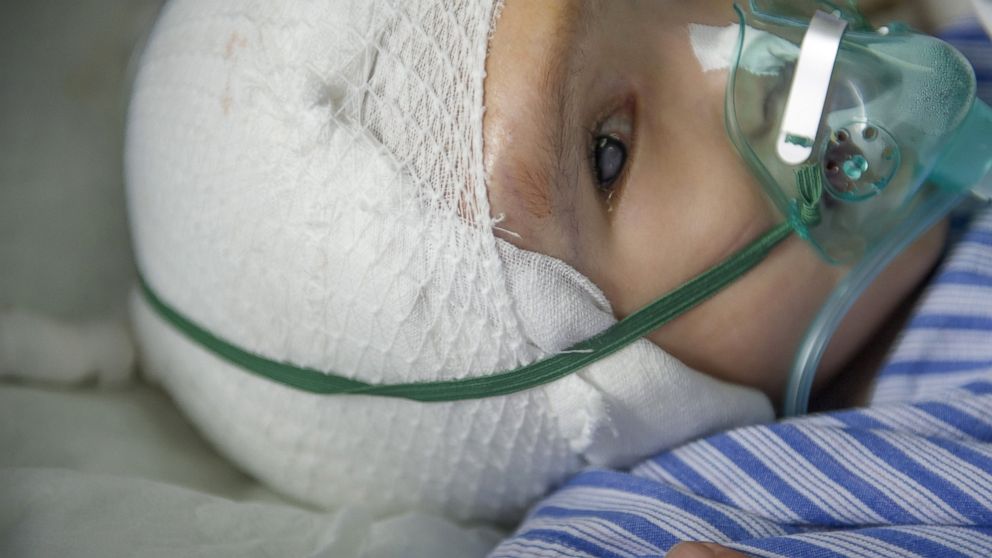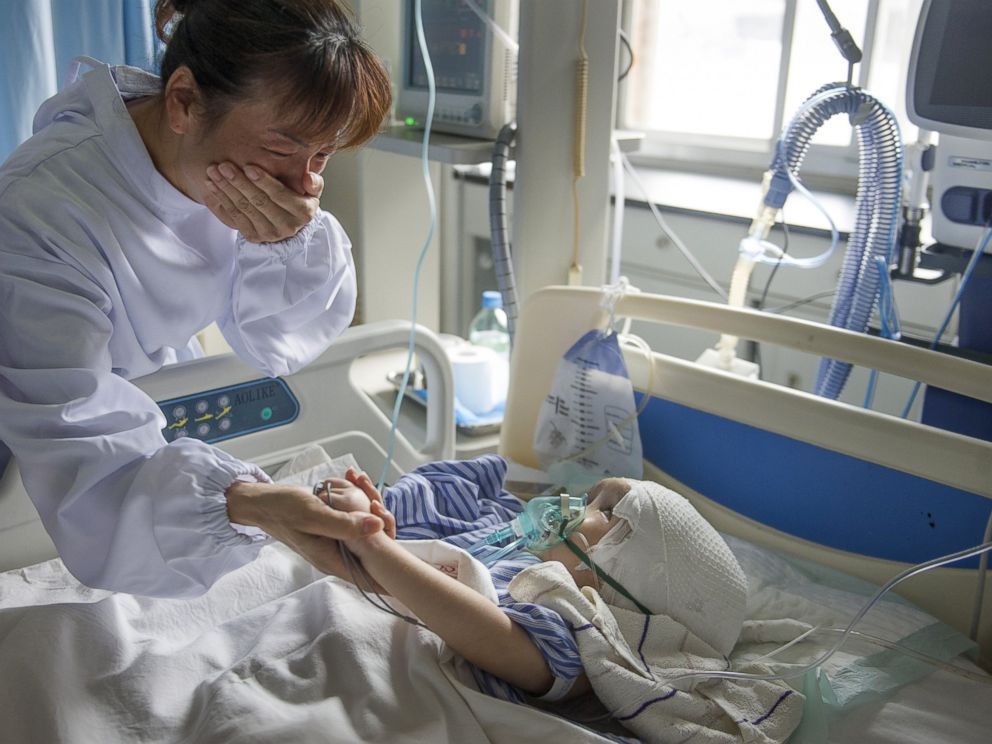Toddler Receives 3-D Printed Implant After Head Swells to Three Times Normal Size
A toddler had surgery to fix build-up of fluids in her skull.

— -- A Chinese toddler was reportedly helped when doctors used a 3-D printed titanium implant to reshape her skull after a rare birth defect left her head triple its normal size.
Named Hanhan, according to Reuters and Getty Images, the girl underwent surgery to treat congenital hydrocephalus, a condition where fluid builds up around the brain. Doctors worked on Hanhan at the People's Hospital of Hunan Province, according to Getty.

Dr. Gregory Lakin, Chief of Pediatric Plastic Surgery at University Hospitals Rainbow Babies and Children’s Hospital in Cleveland, explained that the rare condition occurs when cerebrospinal fluid cannot drain properly from the skull.
"It’s not draining properly and…leads to problems with the head, to swell," he told ABC News. "It will push out on bone," and cause additional strain on the brain itself.
Lakin, who did not treat Hanhan, said in the U.S. most doctors will remove part of the skull, drain the fluid and then reimplant the piece of skull bone. In that case the operation can be longer but the patient will be less likely to develop infection or rejection of the material.
Lakin said if the bone isn't strong enough to use or if surgeons are concerned about conducting a long operation, they may instead use a 3-D implant.
"They can be made and off the shelf and it’s faster," Lakin explained of 3-D printed implants. Lakin said the implant can be used because at age 3, Hanhan's brain would be almost done growing and the implant would likely not affect the growth.

Without the operation to properly drain fluid, children with hydrocephaly can have permanent brain damage from the tremendous pressure being put on their brain.
"The brain will get thinner and stretched out," Lakin said. He explained that children with untreated congenital hydrocephalus can develop issues with "with speech, vision" or "intellect."
"Some of these kids are bedridden because they can’t move," their head, said Lakin. "This [operation] gives the kid a more normal life to go out and play."




